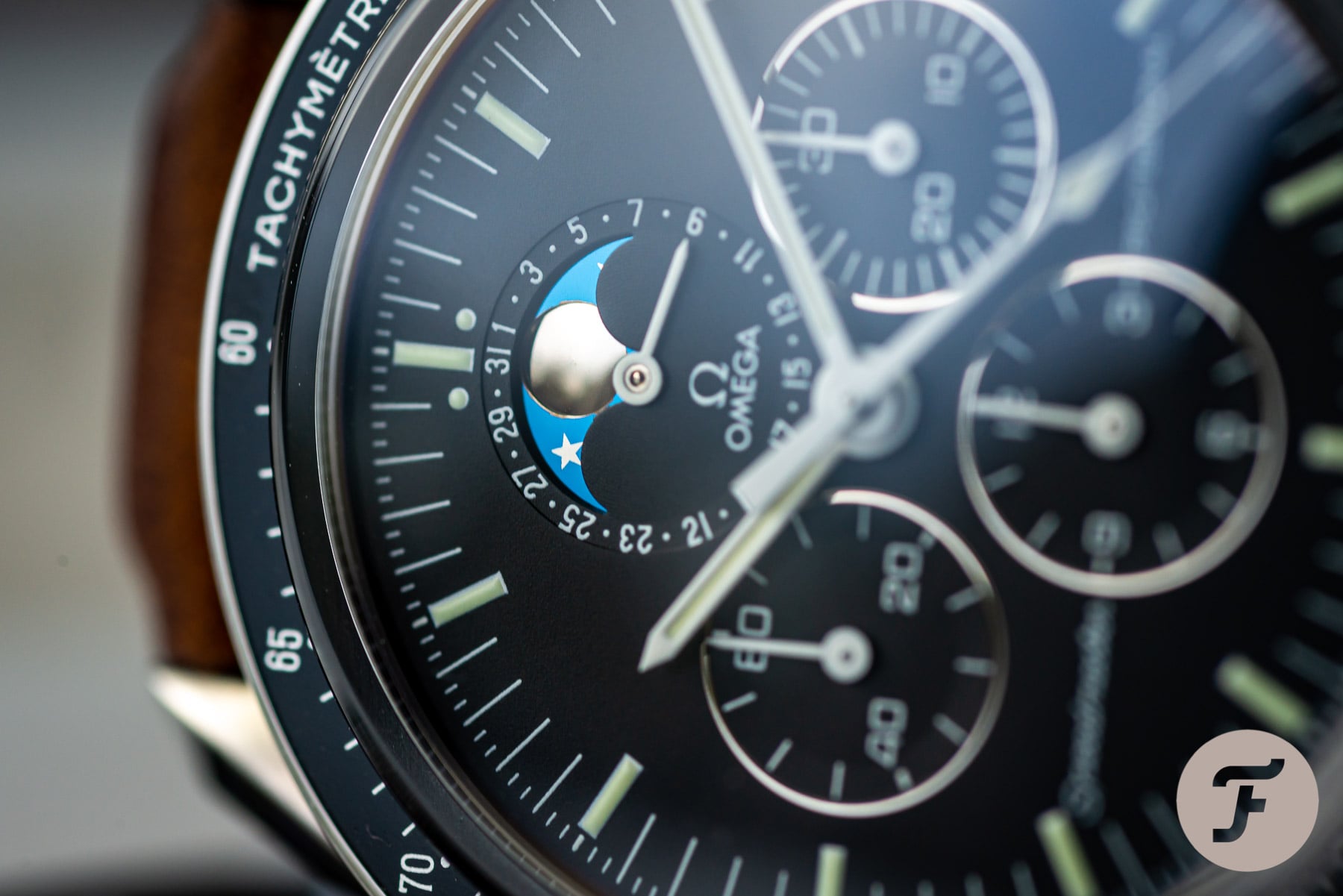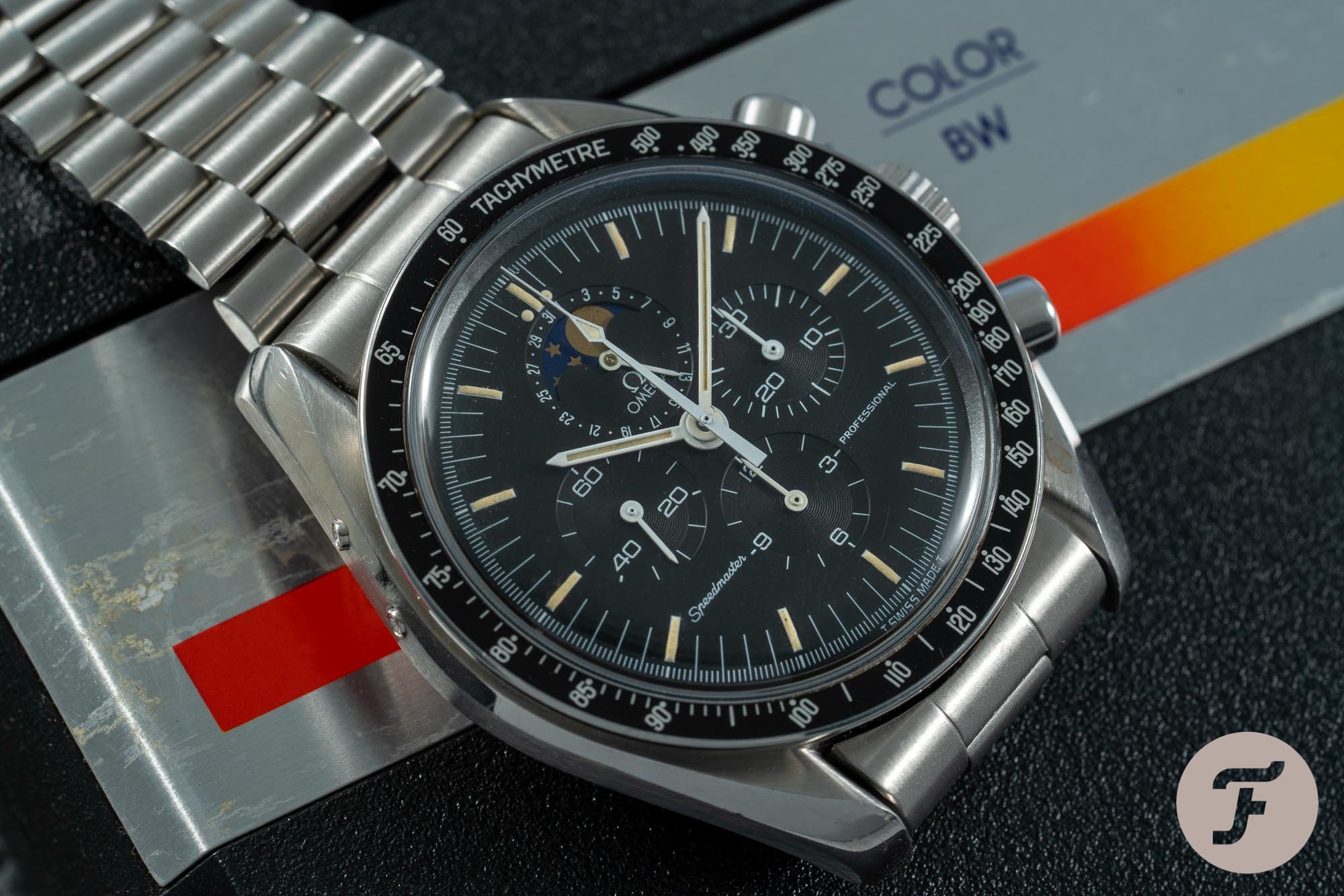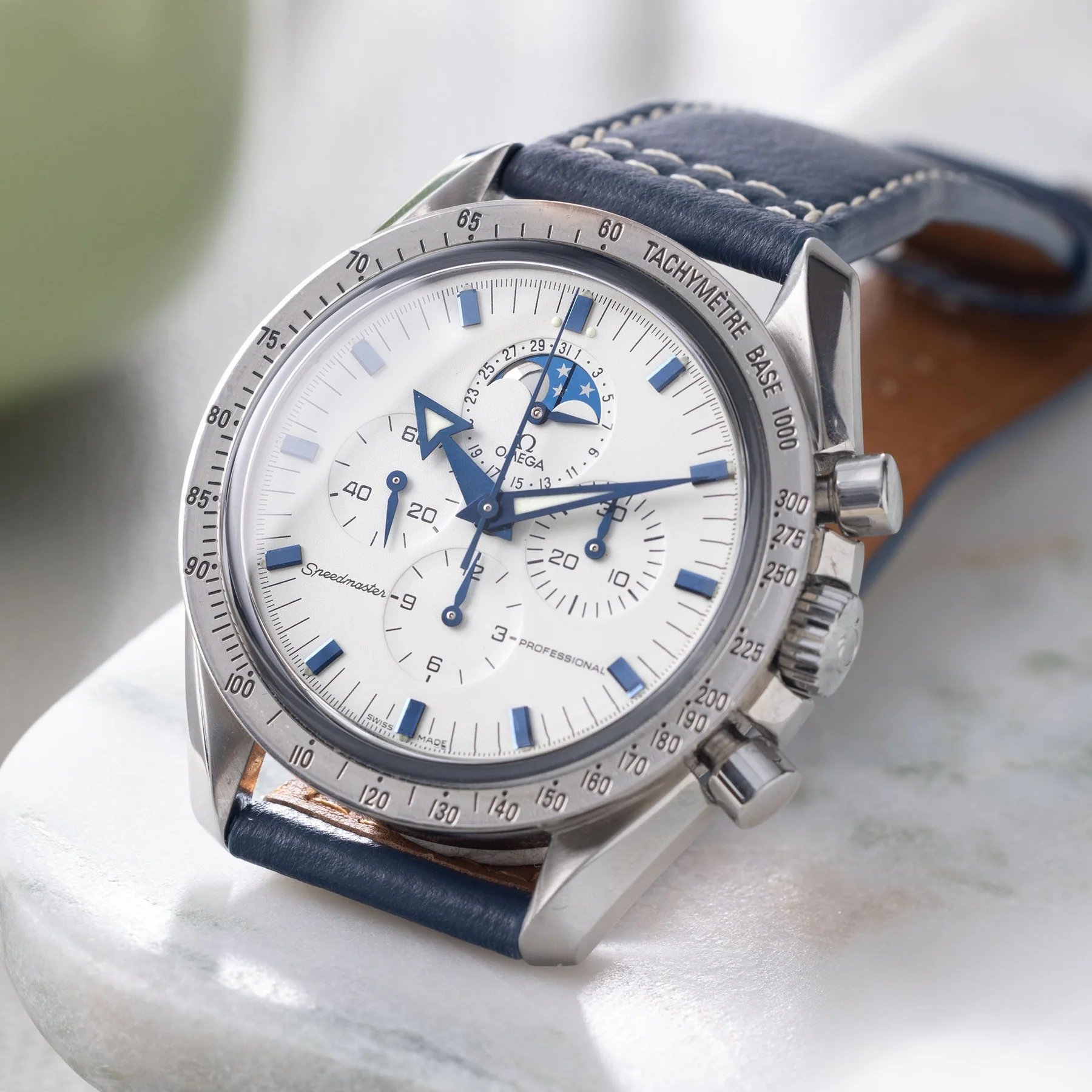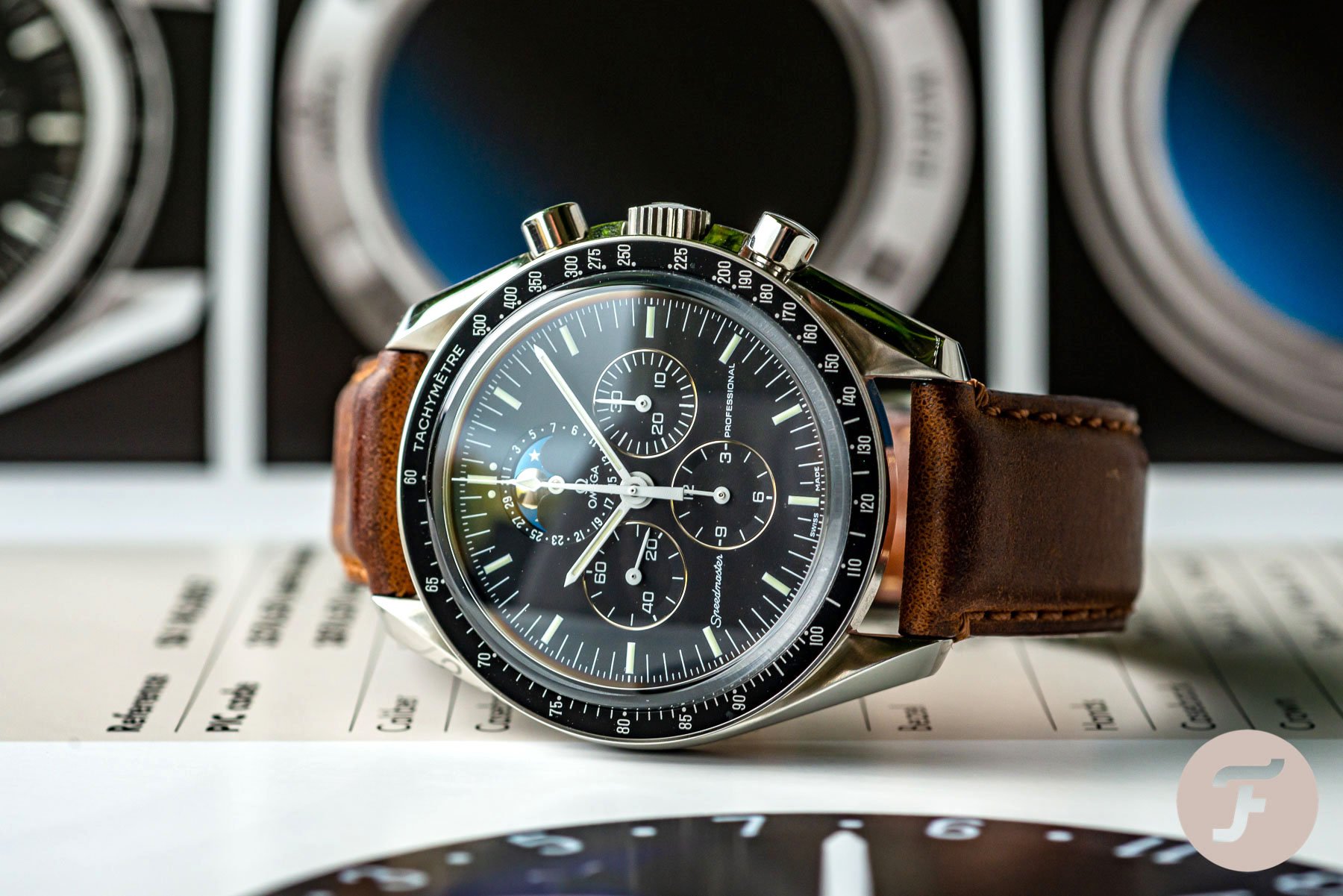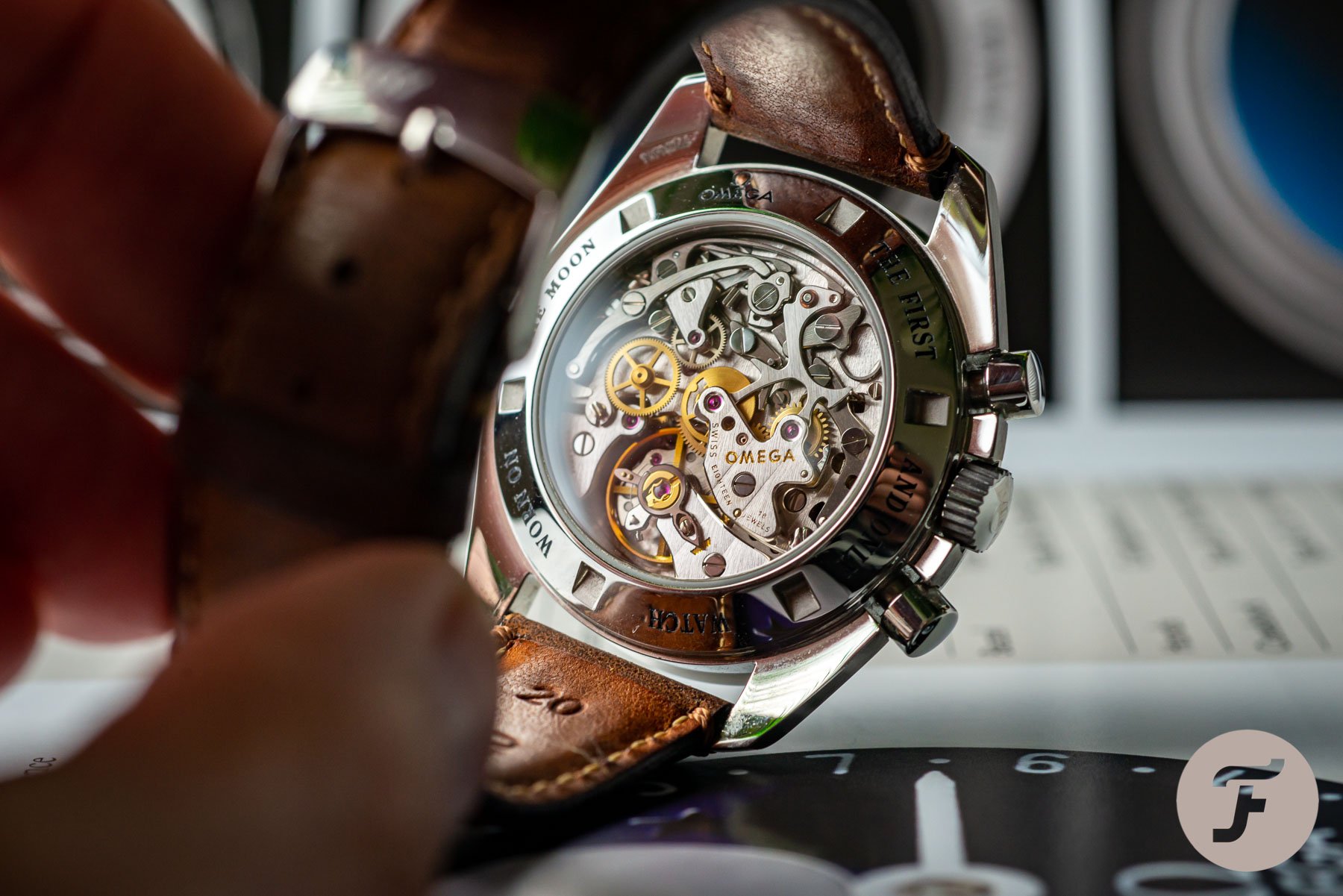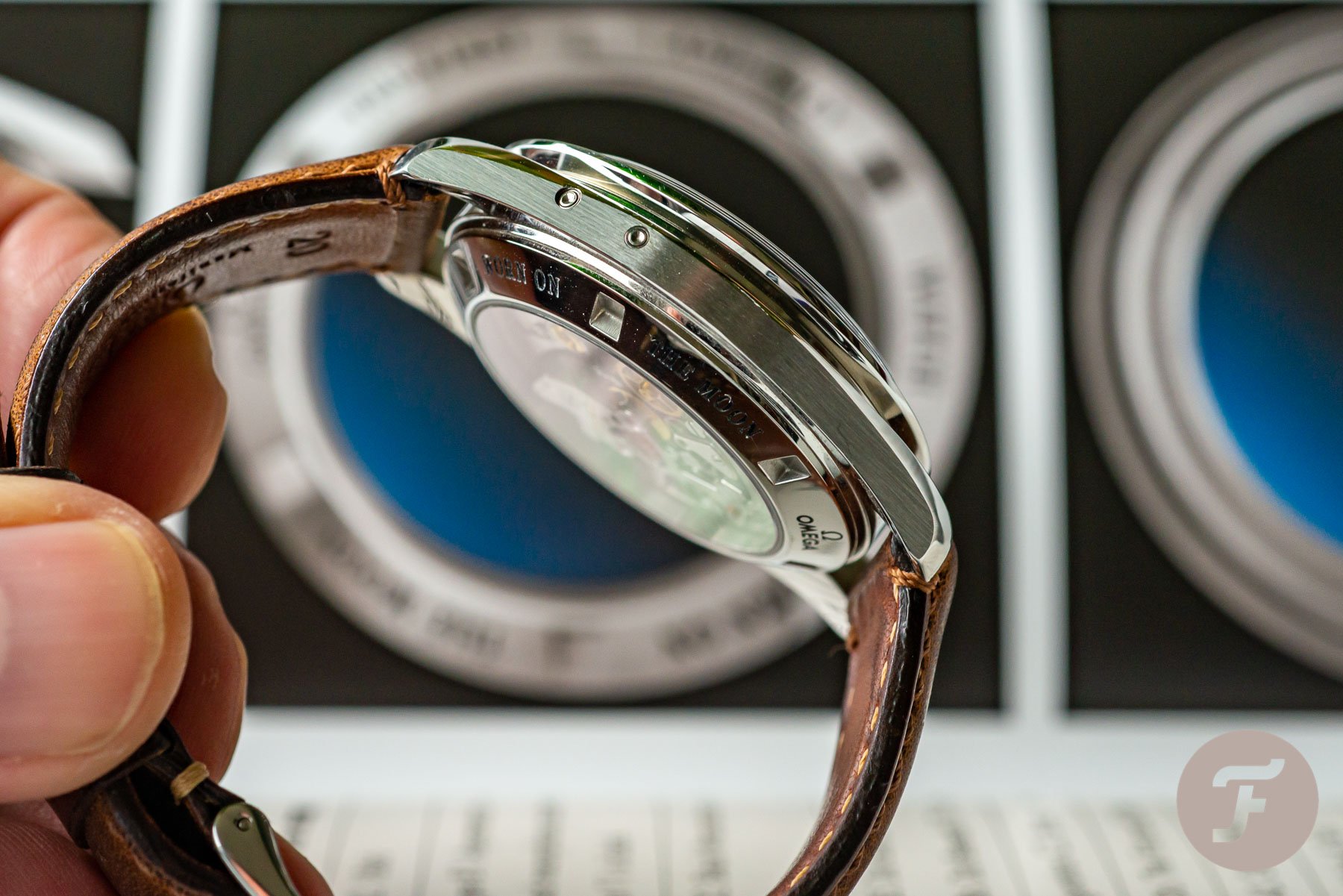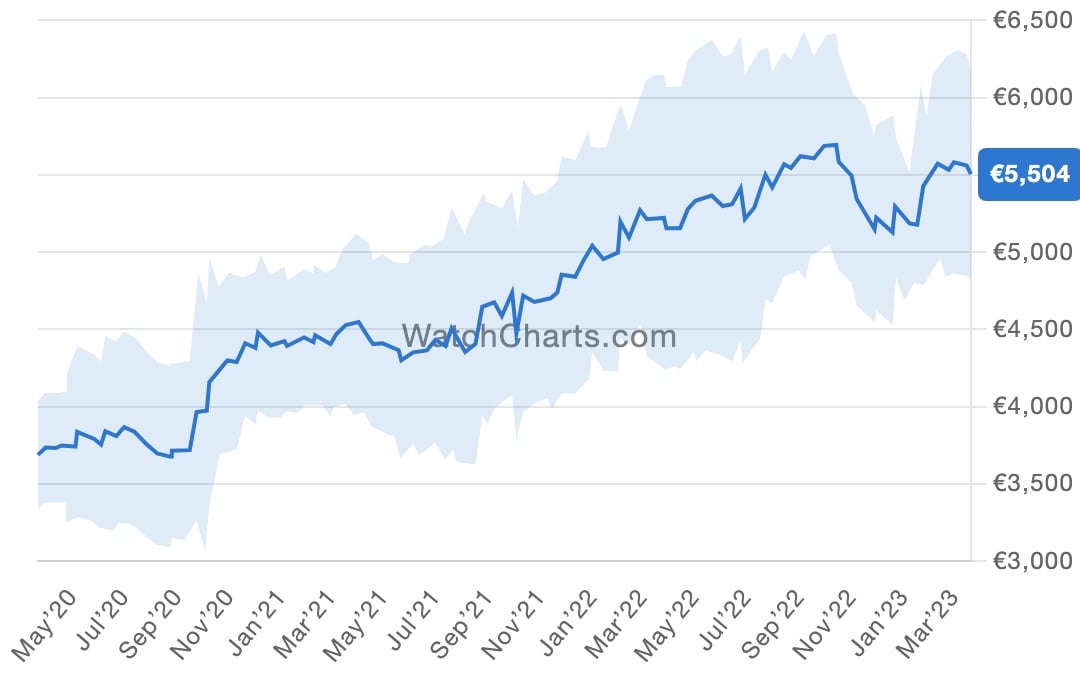The Moonwatch With A Moonphase — A Hidden Gem
For many watch enthusiasts, a watch moonphase complication is something special! It’s not the most difficult complication for brands to develop, but it’s very rewarding for the owner of the watch. A moonphase disc on a dial is a nice visual element, and it certainly suits the official Moonwatch. With Omega bumping up prices of the regular Speedmaster Professional (€7,500 for the Hesalite version, €8,600 for the sapphire version), you will find some of the discontinued models to be relative bargains all of a sudden. A good example of this is the Omega Speedmaster Moonphase, and there are quite a few variations out there.
Speedmaster with a moonphase indicator
Most moonphase watches use a disc with two moons on it and have a wheel with 59 teeth. This wheel advances one notch every 24 hours. Therefore, a full rotation of the disc, showing the different phases of the new moon, first quarter, full moon, and last quarter, takes 29.5 days. When the lunar cycle is complete, the second moon appears in the moonphase aperture. This is why there are 59 teeth (29.5 × 2 = 59) on the wheel that drives the moonphase disc.
Now, in reality, the lunar cycle takes 29 days, 12 hours, 44 minutes, and 2.8 seconds (29.53 days). So, as you can guess, the moonphase indicator requires manual correction, but only once every 2 years, 7 months, and 20 days. There are watches with a moonphase complication that is more precise (using a wheel with 135 teeth), but these are also much more complex to make. Omega’s Speedmaster with a moonphase complication has a mechanism that uses a wheel with 59 teeth.
The 1985 SpeedyMoon
All the way back in 1985, Omega introduced the Speedmaster Professional ref. 345.0809 “SpeedyMoon” with a moonphase complication. Powering the watch was caliber 866 — basically, an 861 with a moonphase complication and a pointer date. Omega produced only 1,300 pieces, and there were also 700 Speedmaster Teutonic models with the same caliber 866. The SpeedyMoon models were in the collection from 1985 to 1988. With a run of just 1,300 pieces, that is unthinkable today. These watches have increased in demand and thus value quite a bit (now ~€15,000, depending on their condition), and they’re not really a wallet-friendly alternative to today’s regular Moonwatch.
Speedmaster Broad Arrow Moon Phase Models
In 1999, Omega introduced a white gold Speedmaster Professional with a moonphase complication. This model was an unofficial celebration of the 30th anniversary of the Apollo XI mission. These watches are sought after today as only a small number were made. A year later, though, in 2000, Omega introduced moonphase variations of the Speedmaster ’57 “Replica” or “Broad Arrow.” These steel watches had a white gold bezel and the typical broad arrow hands. There are two versions of this model, one with an ivory dial with blue hands (reference 3575.20) and another with a silver dial and steel hands (3575.30). All three were powered by Omega’s caliber 1866, the successor to the 866 that was used in the second half of the 1980s. Depending on the condition of the watch, the steel versions can be found on the pre-owned market for around €5,000–5,500.
The new Moonwatch Moonphase
Then, in 2003, Omega realized it was time to come up with a new version of the original SpeedyMoon. It was nearly identical to the 1985 version but modernized with a sapphire crystal, silver rims around the sub-dials, a sapphire case back, and a new bracelet (type 1998/849). Basically, it was a 42mm Moonwatch like the reference 3570.50/3573.50, but it was powered by the caliber 1866.
This Speedmaster Professional Moonphase watch has reference 3576.50 for the model on the ref. 1998/849 bracelet and reference 3876.50 for the version on a black alligator strap. Funnily, at the time of introduction, the price of the new SpeedyMoon was nearly twice as much as the regular Speedmaster Professional (3570.50), which retailed for €2,180 on a steel bracelet in 2003. Yes, I hear you, but those days are over, I am afraid.
When Omega introduced the new Moonwatch (reference 310.30.42.50.01.001) in 2021, I expected to see a caliber 3866 with a moonphase complication at some point. But thus far, Omega has not released one. The only moonphase Speedmaster in the collection is the Speedmaster Moonphase 44.25mm (304.33.44.52.03.001), which houses the self-winding 9904 movement. I do expect Omega to introduce a moonphase version of the current Moonwatch someday, though.
Until then, have a look at the discontinued Speedmaster references 3576.50 and 3876.50. These were in production from 2003 till 2017. The prices for them on the pre-owned market have increased over the years, but they are still far from the price of a new regular Moonwatch. According to WatchCharts, the market price is around €5,500 (see above).
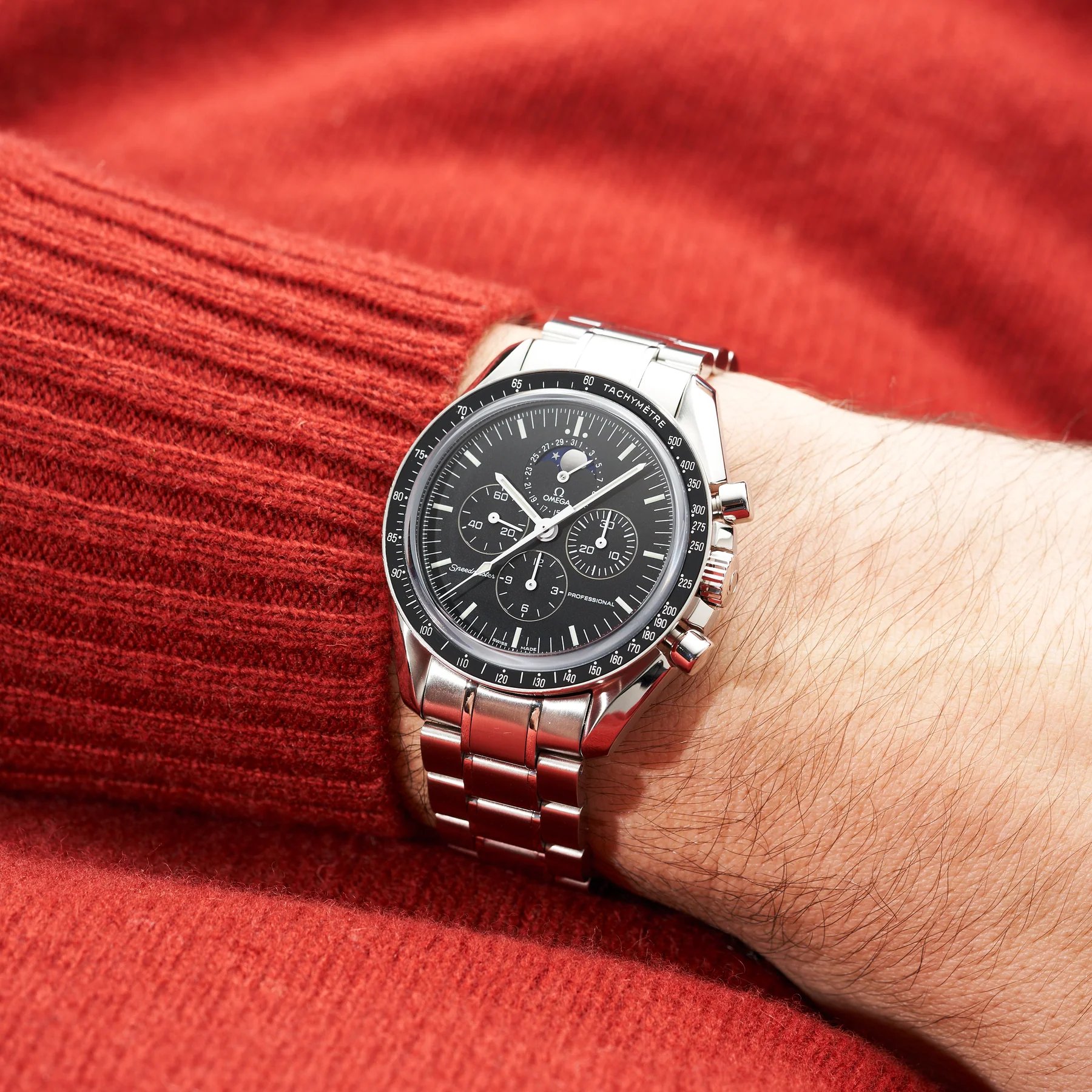
Image: Subdial.co
The Moonwatch Moonphase is overlooked
Interestingly enough, the Speedmaster Moonwatch models with a moonphase complication (any of the versions after 2000) have not been very popular. The good thing is that this has kept the prices quite sane. For example, the Speedmaster 3576.50 above is on offer for less than £5,000 on the Subdial.co website with the box and papers. Buying a watch should not only be about price, but it’s a very cool variation of the Omega Speedmaster Professional Moonwatch. Basically, you have to look twice (from a distance), to recognize that it’s a moonphase version of the iconic chronograph. With a production that ran between 2003 and 2017, there should be quite a few examples on the pre-owned market. This enables you to pick one in the condition you desire, either with or without a box and papers.
Omega’s caliber 1866 has a proven track record too. Just make sure to have it serviced or check that it has been serviced (recently) when you buy one. One of the common issues is not with the movement itself but with the correctors in the case band, which get stuck due to dust or gunk. You can try to clean them yourself first with a bit of lukewarm water and a soft toothbrush. If that doesn’t help, a service will definitely do the trick.
Happy hunting! You can find all of our other Speedy Tuesday articles here.

